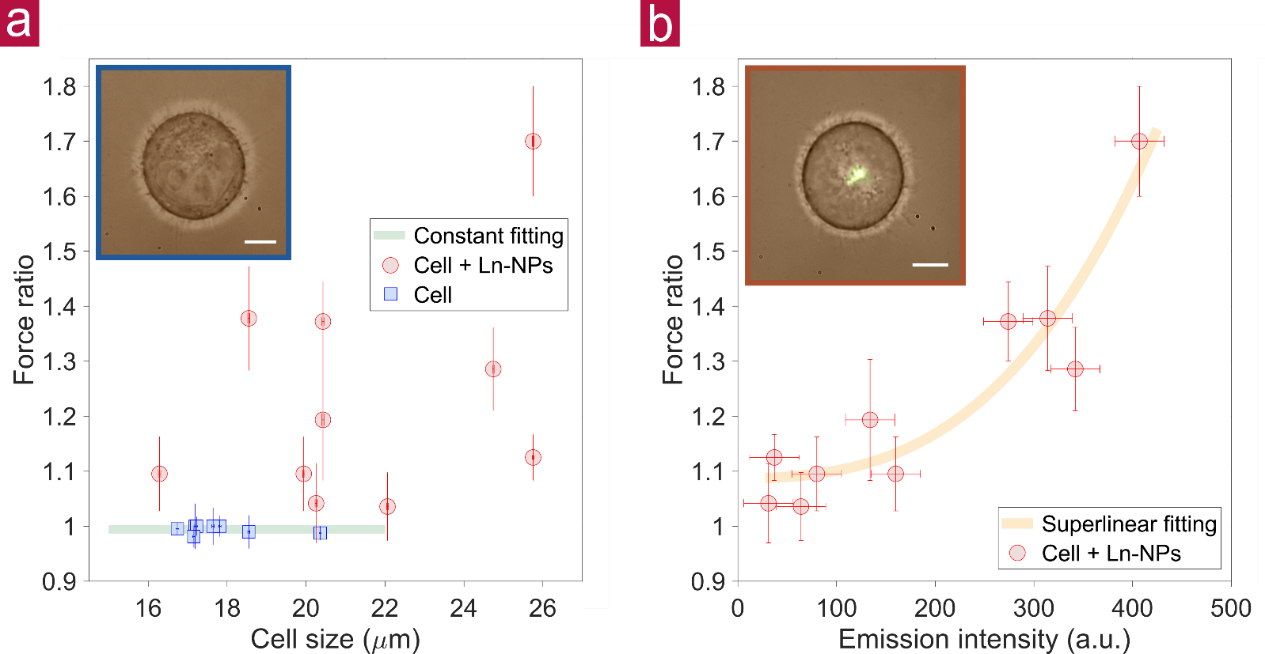Optical tweezers are widely used in materials assembly, characterization, biomechanical force sensing, and the in vivo manipulation of cells and organs. The trapping force has primarily been generated through the refractive index mismatch between a trapped object and its surrounding medium. This poses a fundamental challenge for the optical trapping of low-refractive-index nanoscale objects, including nanoparticles and intracellular organelles.
Prof. Dayong Jin, Chair Professor at SUSTech Department of Biomedical Engineering (BME) and Distinguished Professor at the University of Technology Sydney (UTS), was part of an international collaborative research team that published an article on February 18, 2021, in Nature Nanotechnology, titled as “Optical tweezers beyond refractive index mismatch using highly doped upconversion nanoparticles.”
The research focuses on a technology that employs a resonance effect to enhance the permittivity and polarizability of nanocrystals, leading to enhanced optical trapping forces by orders of magnitude. This effectively bypasses the requirement of refractive index mismatch at the nanoscale.

Figure 1. Comparison between optical trapping of low refractive index nanoparticles with or without doping by lanthanide ions
The study shows that under resonance conditions, highly doping lanthanide ions in NaYF4 nanocrystals makes the real part of the Clausius–Mossotti factor approach its asymptotic limit, thereby achieving a maximum optical trap stiffness of 0.086 pN μm–1 mW–1 for 23.3-nm-radius low-refractive-index (1.46) nanoparticles, that is, more than 30 times stronger than the reported value for gold nanoparticles of the same size.

Figure 2. Escape velocity measurements to quantify the trap stiffness for HeLa cells with and without lanthanide-doped nanoparticles.
In conclusion, this study discovered that highly doping lanthanide ions in single nanoparticles can generate a strong oscillation resonance effect in the electromagnetic field and thereby substantially enhance the optical trapping force. This strategy can bypass the limitation set by the refractive index mismatch between an object and its surrounding medium, suggesting a new way to design far-field optical tweezers on the nanoscale. Also, benefiting from the limited heat generation, compared with gold nanoparticles, this work opens the door to a highly efficient, long-term, optical manipulation of biological samples. Furthermore, lanthanide-doped nanoparticles can be designed to be responsive to the surrounding temperature and pH values, and to enable multimodal manipulation.
Mr. Xuchen Shan from the UTS Institute for Biomedical Materials & Devices (IBMD) was the lead author of the paper. Dr. Fan Wang of UTS, Dr. Peter J. Reece of the University of New South Wales (UNSW Sydney), and Prof. Dayong Jin of SUSTech and UTS, are the corresponding authors.
The scholars acknowledge financial support from a UTS Chancellor’s Postdoctoral Research Fellowship, Australian Research Council (ARC) DECRA fellowship, the ARC Discovery Project, the National Natural Science Foundation of China (NSFC), Science and Technology Innovation Commission of Shenzhen, and the Australia–China Science and Research Fund Joint Research Centre for Point-of-Care Testing.
Paper link: https://www.nature.com/articles/s41565-021-00852-0